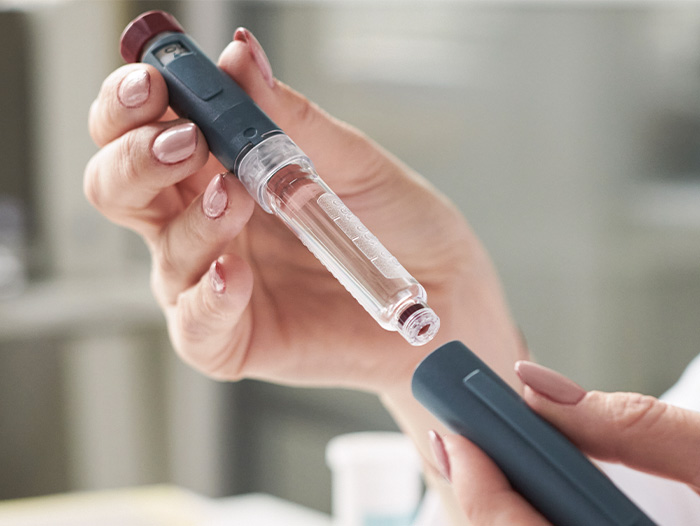Auto logout in seconds.
Continue LogoutAs national pharmacy chains, including Rite Aid, Walgreens, and CVS, plan to close hundreds of stores nationwide, public health experts are concerned that these closures will lead to "pharmacy deserts" and exacerbate health inequities, particularly in urban areas.
Hundreds of pharmacies across the country are closing
Over the next few years, Rite Aid, Walgreens, and CVS are planning to close hundreds of stores across the country as they face increased competition, changing consumer behaviors, staffing shortages, retail crime, and more.
Last week, Rite Aid filed for Chapter 11 bankruptcy and announced that it is closing 154 of its 2,100 remaining locations. This closure will affect 39 locations in Pennsylvania, 31 in California, 20 in New York, 19 in Michigan, and six in Maryland. The company has also closed over 200 locations in the last two years.
In June, Walgreens announced that 150 locations would close by the end of next summer. In 2021, CVS also announced that it planned to shut down roughly 900 stores over the next three years. In comparison, CVS closed 244 locations from 2018 to 2020.
"The economics of running those stores have just unraveled, and they're not as profitable as they once were," said Neil Saunders, managing director of the analytics company GlobalData Retail. "Retailers are looking to offload them."
"Now we've got players like Dollar General that's moved in, we've got expansion of supermarkets, and Walmart is more of a destination in many of these areas," Saunders added. "So that's really cleaned off some of the trade of these stores."
Independent pharmacies are also facing many of the same challenges as the larger national chains. According to a recent survey from the National Community Pharmacists Association, independent pharmacies reported the slimmest profit margins in the 10 years the organization has been collecting data.
Ronna Hauser, SVP for the trade group, said new changes to how the government handles Medicare payments could also reduce pharmacy payments and worsen the situation. "Cash-flow is going to be a real concern" in the first three to six months of 2024, she said. "We are concerned that there could be closures due to this cash flow crunch … and we're very concerned about access points for patients."
How pharmacy deserts impact patients
According to public health experts, many neighborhoods, particularly those that are low-income and predominantly Black or Latinx, are already experiencing the impact of widespread pharmacy closures.
"According to our estimates, about one in four neighborhoods are pharmacy deserts across the country," said Dima Qato, an associate professor at the University of Southern California. "These closures are disproportionately affecting communities that need pharmacies most."
In rural areas, residents are in a pharmacy desert if they are more than five miles from the nearest drugstore. However, in urban areas where residents may rely heavily on public transportation, this distance shrinks to just half a mile.
Although the number of pharmacies has remained largely the same since 2014, Jenny Guadamuz, an assistant professor of public health at the University of California at Berkeley, said that there has been a "distribution shift." Many pharmacies are now leaving low-income and majority Black/Latinx neighborhoods and moving into predominantly white and middle- to higher-income areas.
Lorece Edwards, a professor of public health at Morgan State University, calls this redistribution the "urban health penalty" and says that it could worsen long-standing racial and economic disparities in healthcare outcomes.
"This has been going on historically, and that pretty much just exacerbates preexisting health disparities," Edwards said. "It interrupts care and interrupts all the access to medical advice, access to vaccines, access to food, access to staples. … All of these things are coming out of communities that are already distressed."
For their part, national pharmacy chains have said that they are working to improve access to their services, especially in underserved markets, amid store closures.
"Our small-format store pilot is specifically designed to provide access to pharmacy services in 'pharmacy deserts' and underserved communities," Rite Aid said. The company has also "conducted additional research to help ensure we do not create pharmacy deserts in the communities we serve" as part of its bankruptcy court-supervised store closures.
Walgreens has also said it is committed to ensuring equitable access to pharmacy care and that it is utilizing targeted pharmacy services, including same-day prescription delivery, to help underserved communities.
"We also engage in key alliances to reach vulnerable populations, as we have a long history of working with local churches, civic groups and national public service organizations to deliver lifesaving vaccines to medically underserved populations," Walgreens said. (Gregg/Peiser, Washington Post, 10/22; Frankel, Newsmax, 10/23)
Download our ready-to-use slide presentation that equips leaders across the healthcare industry with strategic insights on major trends impacting the pharmacy market. Included are in-depth looks at the strategies pharmacy benefit managers and retail pharmacies are exploring in 2023 and beyond.
Don't miss out on the latest Advisory Board insights
Create your free account to access 1 resource, including the latest research and webinars.
Want access without creating an account?
You have 1 free members-only resource remaining this month.
1 free members-only resources remaining
1 free members-only resources remaining
You've reached your limit of free insights
Become a member to access all of Advisory Board's resources, events, and experts
Never miss out on the latest innovative health care content tailored to you.
Benefits include:
You've reached your limit of free insights
Become a member to access all of Advisory Board's resources, events, and experts
Never miss out on the latest innovative health care content tailored to you.
Benefits include:
This content is available through your Curated Research partnership with Advisory Board. Click on ‘view this resource’ to read the full piece
Email ask@advisory.com to learn more
Click on ‘Become a Member’ to learn about the benefits of a Full-Access partnership with Advisory Board
Never miss out on the latest innovative health care content tailored to you.
Benefits Include:
This is for members only. Learn more.
Click on ‘Become a Member’ to learn about the benefits of a Full-Access partnership with Advisory Board
Never miss out on the latest innovative health care content tailored to you.


